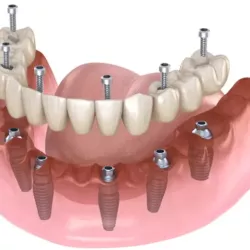What Do You Need To Do When Your Breast Implants Are Past Their Recommended Life Span?
Breast implants can help you reach your desired aesthetic, offering a renewed sense of self-confidence after pregnancy, aging, weight loss, or other changes to the body. Implants, which are made of either silicone or saline, can also restore the breasts following a mastectomy.
That said, you should not plan to have your breast implants for the rest of your life. They do not last forever. The duration of your breast implants can vary depending on your body and how you care for them over time.
What is the average duration of breast implants?
While breast implants are designed to be long-lasting, the American Society of Plastic Surgeons does not consider them to be “lifetime devices.”
Breast implants can last anywhere between 10-25 years following your plastic surgery procedure, with longevity depending largely on your body and how you care for your implants. Some individuals can keep their breast implants their entire lives and remain satisfied with the results, but there are some situations where replacement or removal is medically necessary. In these cases, neglecting to do so can have serious consequences.
Note that there is no major difference between saline and silicone implants in terms of duration, as they are proven to have similar lifespans when inserted at the same time.
Signs that replacement or removal is necessary
There are several reasons you may choose to pursue a breast implant removal or replacement. Aside from a change in personal desires, there are certain complications that can affect how long your implants last and when they need to be replaced or removed.
For example:
Hardening
Capsular contracture, or breast hardening, occurs when the scar tissue hardens around one or both breast implants. This can cause a feeling of tightness, pain, or tenderness. It can also alter the size or shape of the breasts.
Saline implant rupture
If you have saline breast implants, you may experience leakage and deflation when, due to a hole or tear in the implant, the saline leaks out and is harmlessly absorbed into the surrounding tissue. Due to the “deflation,” the breast size will decrease and the shape will be altered.
Silicone implant rupture
If you have silicone breast implants, you may experience what is called a “silent rupture.” Because the thick silicone gel often stays within the implant or surrounding tissue, these ruptures are less noticeable than saline ruptures. You may experience tingling, swelling, burning, or numbness in the area, or notice uneven or reduced breast size.
Rippling and palpability
“Rippling” occurs when the shell of the implant becomes wrinkled and can be seen or felt through the skin. This tends to be more commonly seen with saline breast implants and textured shells, as well as among those with small amounts of pre-existing breast tissue. Whether you can see and/or feel the “ripples” depends on their severity.
Change in position
Over time, your breast position will change as a result of normal body fluctuations, whether you have breast implants or not. In the absence of medical issues, your board-certified plastic surgeon will provide recommendations as to whether an implant removal, replacement, and/or breast lift is appropriate to return your breasts to their desired shape.
What to expect with implant removal
When you get breast implants done, your skin naturally stretches to fit the shape of your new silhouette. Following implant removal, your breasts may appear misshapen or drooping.
For this reason, many choose to pair their breast implant removal procedure with a breast lift to remove excess skin and restore the shape of the breasts. If you have hardened scar tissue, your plastic surgeon can also remove this when removing your breast implants.
During the recovery period, expect to limit your activities and experience soreness and tenderness for up to six weeks.
What to expect with implant replacement
Because breast implant replacement involves working with scar tissue and other changes in breast tissue, it can be more complicated than the original procedure. It involves removing and then reinserting new breast implants in the same position, using the same incisions.
Some individuals may be hesitant to pursue a breast implant revision, especially if they have had a negative outcome or experience with another plastic surgeon. For this reason, we recommend reviewing the credentials and before/after galleries of any plastic surgeon before considering a breast implant revision.
Recovery from a breast implant revision or replacement is similar to initial breast augmentation recovery, so be sure to follow your plastic surgeon’s guidelines by adhering to activity restrictions and wearing the necessary support garments.
Prolong the lifespan of your implants with proper care
How you care for your breast implants can factor into how long they last, so be diligent about caring for your breast implants during and after the initial breast augmentation recovery period.
For example:
- Wear properly fitted bras—avoid push-up bras with excessive lift and wear high-quality sports bras during vigorous exercise
- Maintain good posture to prevent sagging
- Sleep on your back to reduce the pull of gravity and support your breast tissue
- Avoid too much sun exposure
- Eliminate smoking and reduce or eliminate drinking alcohol
- Maintain a healthy weight, keeping in mind that drastic fluctuations can affect skin elasticity
- Keep your skin and muscles strong by eating a nutrient-rich diet
Additionally, be sure to follow your plastic surgeon’s guidance regarding annual checkups and regular self-checks.
Consult with a board-certified plastic surgeon
While most breast implant manufacturers have a recommended timeframe for use, the lifespan of implants can vary from person to person. If you experience a change in personal goals for your body or notice a sudden change in the size, shape, look, or feel of your breasts, contact a board-certified plastic surgeon to consult about a possible removal or revision.
To request a consultation with Dr. Maman, visit our website or contact our office at (212) 920-6800.
More to Read:
Previous Posts:


